EDW License Deduction Criteria
This topic provides information about the license deduction criteria used in LeapLogic to transform legacy EDW workloads to a modern cloud platform equivalent.
In This Topic:
License Deduction Criteria
When you transform EDW workloads such as Teradata, Oracle, etc., to their target equivalents, the unit license quota is deducted. Here, a unit refers to a query in the workload that is successfully transformed. The license deduction logic is determined based on the following criteria:
- File Similarity
- Complexity
- Automation Level Indicator
- Number of Successfully Transformed Workloads
Here is a detailed explanation of each criterion:
File Similarity
The platform employs a similarity evaluation framework that determines the relative correspondence of an incoming file against a corpus of previously processed artifacts. This evaluation yields a similarity index which, in turn, is reconciled with internally governed threshold parameters. The interaction between these values serves as the basis for deciding whether an adjustment to the license quota becomes applicable. In certain conditions—when the index exhibits sufficient divergence or proximity to the threshold—quota units may be appropriated, while under alternative conditions, no adjustment is applied.
Accordingly, files demonstrating pronounced affinity to earlier executions may, under some circumstances, bypass incremental quota attribution, whereas those exhibiting less congruence may result in measurable deductions. The precise determination is mediated by proprietary system logic, operating on layered interpretations of similarity scores.
Complexity
Beyond similarity considerations, the dimensional aspect of unit-level complexity exerts a significant influence on how quota utilization is ultimately reconciled. Each transformation embedded within a workflow undergoes an internalized evaluation process, wherein its relative intricacy is algorithmically weighted. The categories conventionally denoted as Simple, Medium, and Complex are best regarded as heuristic markers rather than rigid determinants, serving to indicate how the platform apportions value within the broader license framework.
Quota adjustments therefore emerge not as a straightforward arithmetic application but as the aggregated outcome of weighted interpretations distributed across all constituent units. As a result, even workflows of ostensibly comparable scale may reflect markedly different quota implications, contingent upon how the system adjudicates and interprets the relative complexity of their internal transformations. In effect, the quota impact is shaped less by file size alone than by the nuanced interplay of classification, weighting, and systemic evaluation.
Automation Level Indicator
Automation Level Indicator refers to the extent to which files are automatically converted from source to the target equivalent. Higher automation level indicator value indicates that most of the file is automatically converted and requires less manual intervention. The license quota deduction depends on whether the automation level indicator meets or exceeds the predefined threshold value.
Number of Successfully Transformed Workloads
This is one of the criteria used for license quota deduction, where the deduction depends on the number of successfully transformed workloads.
View Transformation Quota Details
Follow these steps to see detailed license information:
- Click your username at the top right corner of the screen.
- Click License from the menu.
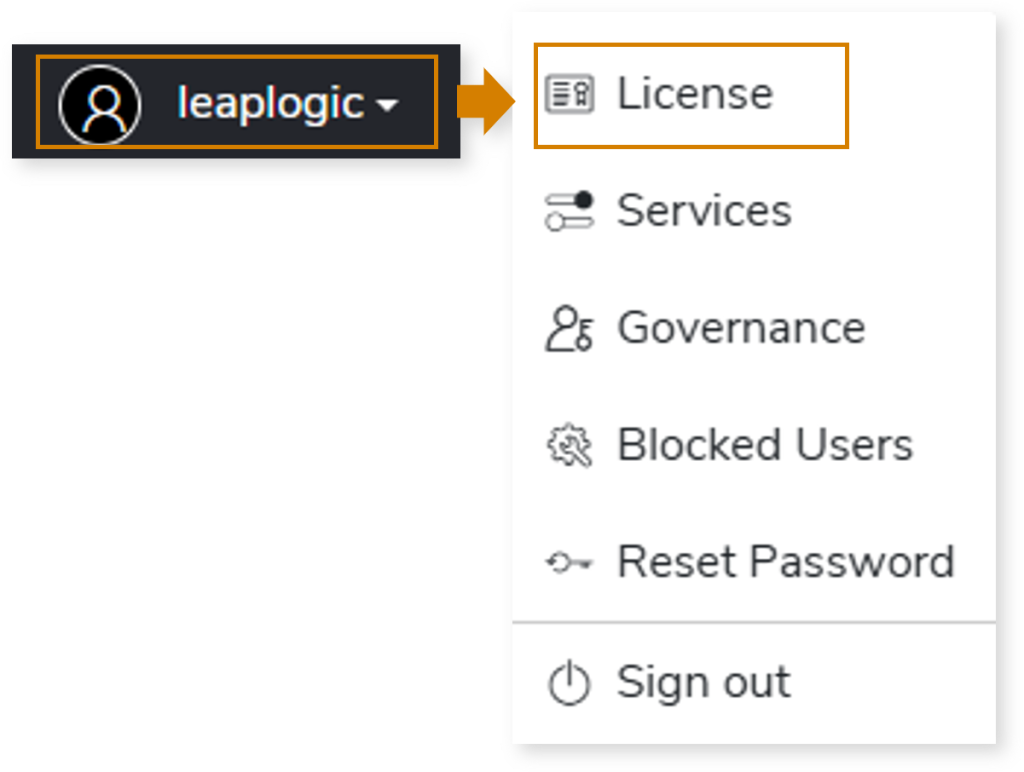
- The Manage Licenses window opens. Click View Details to see detailed license information.
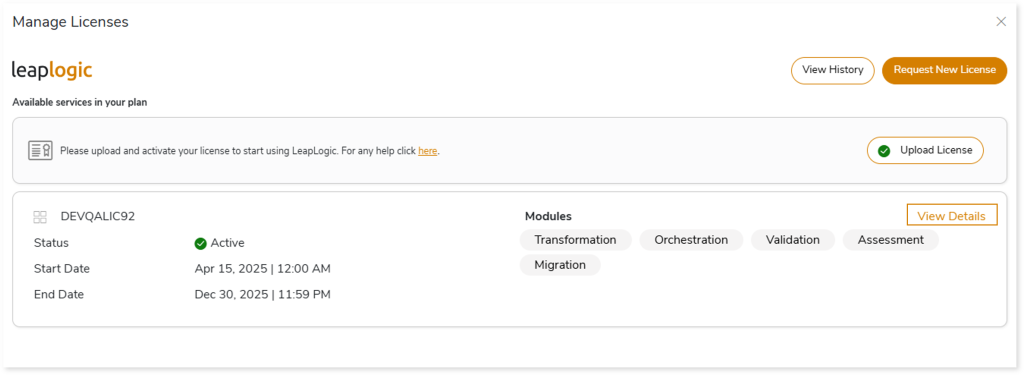
- The License Details page opens. This page provides comprehensive information about your licensing status, quota consumption, activated licenses, upcoming licenses, and a history of expired licenses. You can also monitor the granted licenses and LeapLogic service usages from this page.
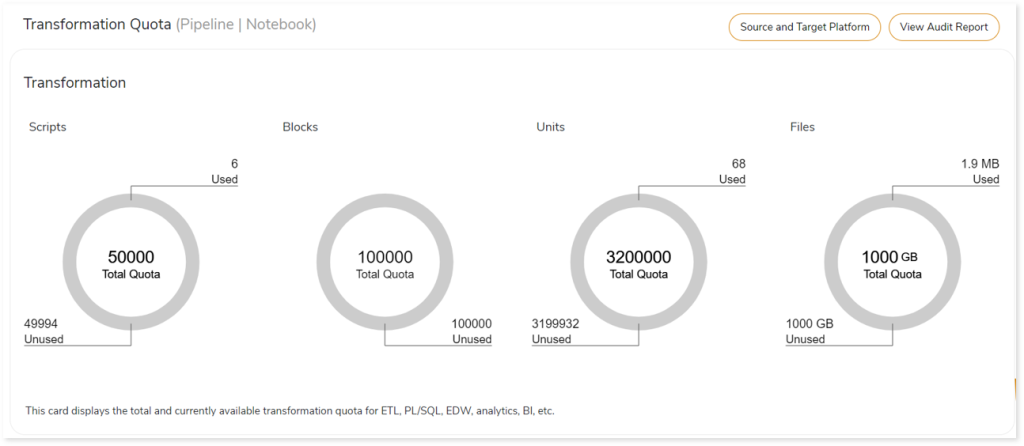
For more information about your license, click here.
EDW Transformation Report
The Transformation Report provides a comprehensive summary of the transformation along with the associated deductible license quota.

The Summary sheet (refer above image) in Transformation_Report.xlsx file showcases detailed information about the license deductible quota.
- File Name: Displays the name of the file.
- Automation Level Indicator: Displays the auto-conversion percentage of scripts.
- File Similarity: Indicates whether the file is similar to the already executed file. If the value is Yes, then the file is similar to an already executed file else No.
- Script Complexity: Displays the complexity of each file.
- Total Blocks: Displays the total number of blocks.
- Success Blocks: Displays the number of successfully transformed blocks.
- Total Units: Displays the total number of units.
- Success Units: Displays the number of successfully transformed units.
- Deductible Unit Quota: Displays the unit quota that needs to be deducted based on the complexity checks and balances.
- Deducted Unit Quota: Displays the actual unit quota deducted from license.
The Query Summary sheet provides information about the queries along with the count of total, auto-converted, and manually corrected queries.
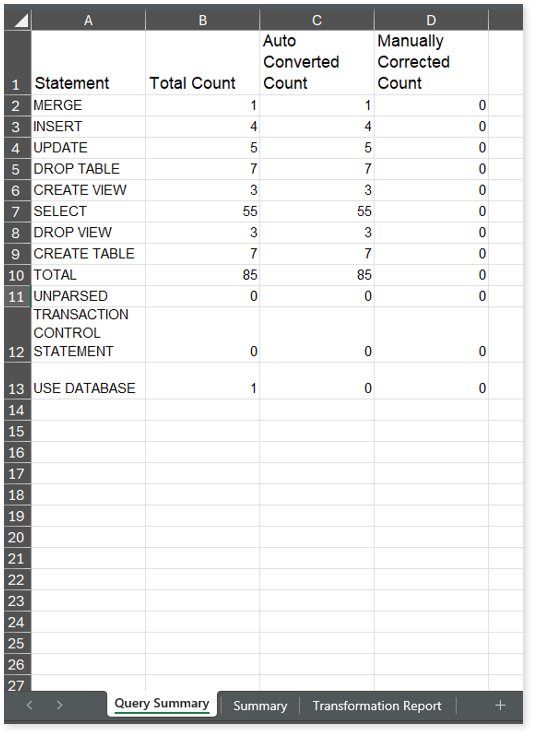
- Statement: Displays the statement types.
- Total Count: Displays the number of queries for each statement type.
- Auto-Converted Count: Displays the number of queries that are automatically converted for each statement type.
- Manually Converted Count: Displays the number of queries that require manual intervention for each statement type.
The Transformation Report sheet lists all the queries along with their type, auto generated query, status, complexity and more.
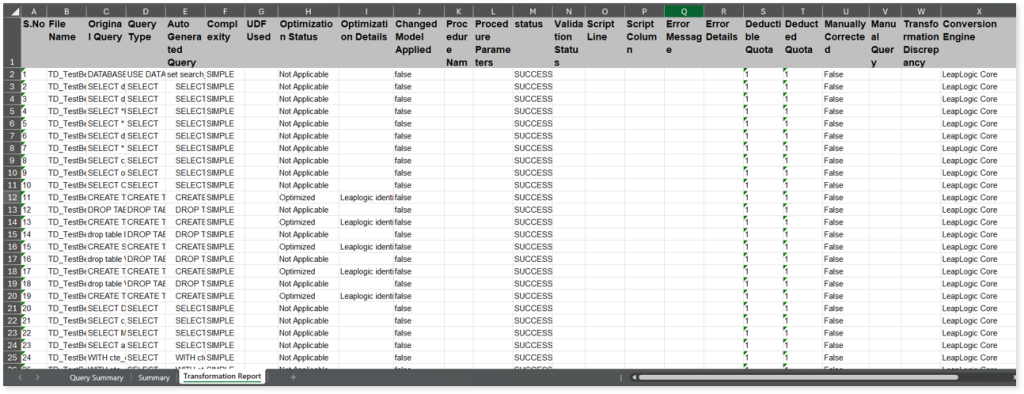
When you try to convert units that exceed the available license quota, those within the quota will successfully convert. However, any additional units beyond the quota will fail to transform and display an error message indicating “License quota insufficient.”
